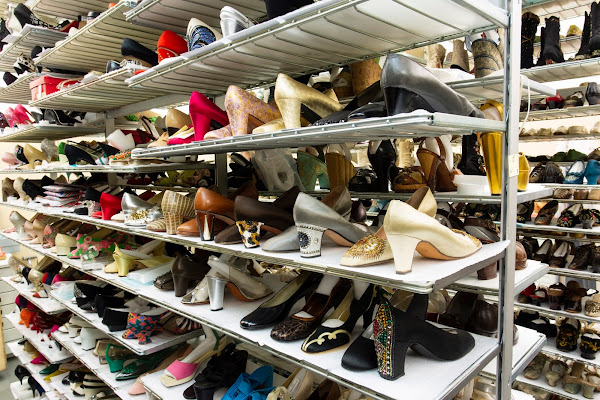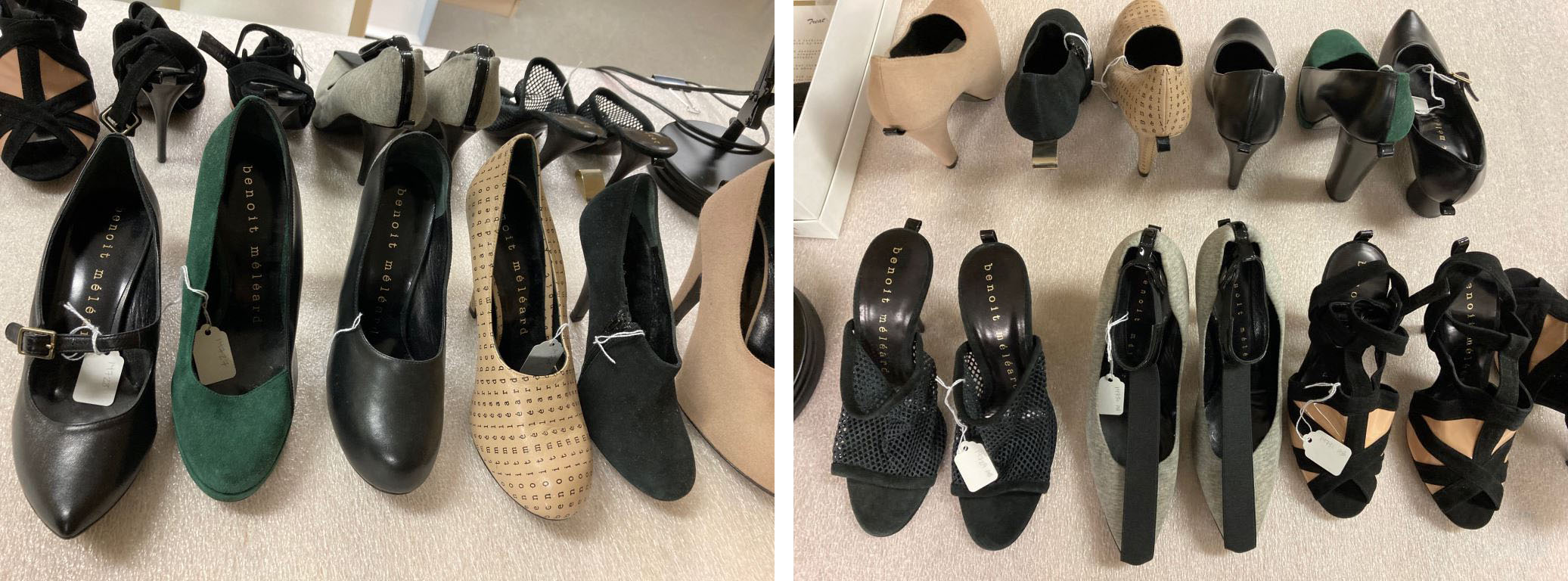At the Bata Shoe Museum, we are always collecting new artefacts. We have over 14,000 objects in our archives, and this number continues to grow. One of the most common questions we are asked by visitors is where do we get our shoes from?
Most museum collecting begins with a colleting mandate, which is essentially a clear plan or set of guidelines that determines what that institution’s collecting goals are. Our official museum mandate states that we collect footwear or footwear-related objects that help us tell a story about the history of fashion and consumption. As a result, we tend to collect examples of footwear that would have actually been worn in its respective time period. It is also in our mandate to acquire examples from around the world and from every available period in history. And lastly, we make sure that the artefacts we collect are in good condition, and not overly worn or damaged, so that we can safely conserve and display these objects.
Our collection was initially put together by Sonja Bata, the founder of the Bata Shoe Museum. As a result, much of the early collection reflects her historical interests. In the past several years, our team has begun to think about expanding this initial collection, and filling in existing cultural or historic gaps. For example, we do not have significant holdings of men’s footwear. This is because historically, men’s fashion was not as valued as women’s clothing, so there aren’t nearly as many examples available to collect.
We are currently trying to remedy this historical bias by collecting more men’s shoes, as well as genderless footwear which is becoming increasingly more popular. Another area where we are actively collecting more footwear is our contemporary Indian fashion holdings. We have many historic examples of footwear from India, but not much beyond the 1970s. So we have been doing lots of online shopping to remedy this!
Knowing what we want to collect is an important step in updating our collections. Maintaining an organized and updated list of where we can get these shoes from is also crucial. One of the sources of our collecting involves purchases from auction houses, antique dealers, or retail websites. We have purchased shoes through Sothebys and Christies, as well as Etsy, EBay and Vestiare Collective. Often, amazing contemporary footwear can be purchased online for a great, museum-friendly price.
As the museum’s profile has increased, more individuals, including designers, have become aware of us and have started to offer donations. These donations are a crucial source of new acquisitions. Currently, we are noticing a wave of Baby Boomers offering us footwear from the 1980s, so this area of our collecting is expanding. We don’t always accept everything that is offered – we make sure that the shoes fit a gap in our collection and remain in reasonable condition, but it is wonderful to currently see our 1980s holdings expand.
Another donation that we recently accepted into our collection comes from French shoe designer Benoît Méléard, whose architecturally-bold designs are unlike anything else in our collection. To date, Benoît has very generously donated over 35 artefacts to our collection, and we will be putting a special pair of his boots on display next month! Check out the video below to see Benoit participate in our Unboxing Video Series, and stay tuned for more updates about other recent acquisitions in the coming weeks.
For more information on how to donate to the museum, please email publicrelations@batashoemuseum.ca




